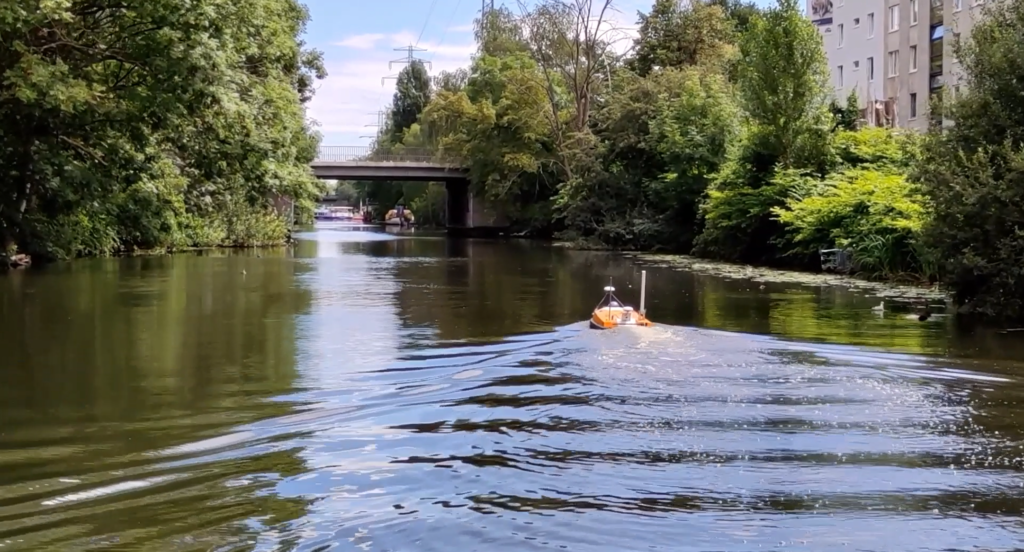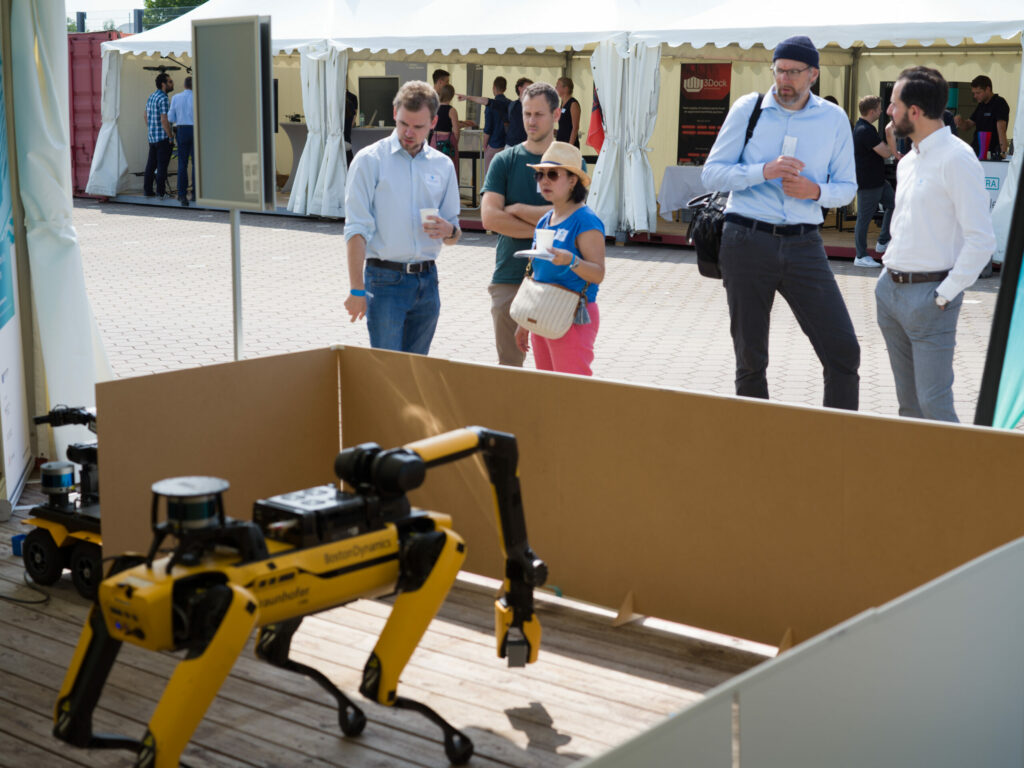EXPLORE
CONNECT
TEST & SHOW
Welcome to the Port of Hamburg
- Your gateway to maritime innovation!
Experience the Port of Hamburg as a dynamic real laboratory for technological innovation: The port offers a unique environment for research, development and the early application of new technologies under real conditions.
About Test & Show
- Harbour as a real laboratory
Experience the Port of Hamburg as a dynamic real-world laboratory for technological innovation: The port offers a unique environment for research, development and the early application of new technologies under real conditions.
We are convinced that digital innovation in all its facets makes an important contribution to securing the future of the Port of Hamburg. This is why we at the HPA, together with players from the port industry, science and the tech world, began developing and testing new solutions for infrastructure and traffic management in the port at an early stage. Alongside important key technologies such as robotics and automation technology, virtual reality (VR) and augmented reality (AR), digital twins and artificial intelligence, we are working on the port of the future in numerous projects.
In the meantime, many applications that seemed like distant dreams a few years ago are already in productive use, such as floating drones for surveying the Elbe, virtual harbour worlds for planning new settlements and buildings or sensor technology for the ongoing monitoring of infrastructure conditions.
With the homePORT, we offer an innovation platform through which we welcome pioneers, researchers and innovators to work with us on the port of the future. We invite innovative SMEs, start-ups and research institutions to put novel solutions and prototypes through their paces as part of test campaigns in the port and to present market-ready solutions and products to an enthusiastic audience.
Whether on water, in the air or on land - homePORT supports you in the realisation of your test or show cases in the Port of Hamburg.
In Water

We have been working on the use of Remotely Operated Vehicles (ROV), Uncrewed Surface Vehicles (USV) and Uncrewed Underwater Vehicles (UUV) for several years now. As part of various research projects such as RoboVaaS or SeaClear, we at the HPA have been able to gain valuable experience about the benefits and limitations of the technology.
Because in the Port of Hamburg, there are almost every challenge that needs to be overcome for future regular operations: e.g. restricted visibility and light conditions due to the tides, interference in signal transmission due to metal structures such as ship hulls and harbour facilities or requirements and approvals in the context of safety and environmental protection.
Our Hydrography department recognised the added value of floating drones early on and has been using them for water measurement in regular operations since 2020. The echo.1 could already be inspected by an interested audience at the ITS World Congress 2021 at homePORT.
Our vision is to establish autonomous swimming and diving robots as modular carrier systems for a wide range of mobile sensor technology in order to handle the various tasks involved in surveying, testing and monitoring harbour infrastructure.
We invite innovative SMEs, start-ups and research institutions to put novel solutions and prototypes through their paces as part of test campaigns in the harbour and to present market-ready solutions and products to an enthusiastic audience.
In the air
Aerial drones to support various tasks in the harbour, e.g. for rapid situational awareness in the event of accidents or storm surges, offer enormous potential. As part of numerous research projects, the HPA has already gained valuable experience and is carrying out important pioneering work together with stakeholders from industry, science and politics.
For example, the PORTwings research project was already testing a teleoperation control centre for controlling drones and mobile sensor technology in 2020. In the RAPID project, we were able to learn a lot about the use of aerial drones for the fully automated inspection of port facilities. The U-Space project demonstrated how drones can be safely and fairly integrated into the airspace as air traffic participants.
The knowledge and experience gained so far serve as a basis for stabilising the use of drones in such a complex infrastructure environment as the Port of Hamburg.
Our vision is "drones as a service" - missions should be ordered at the click of a mouse from your desk, drones carry out the missions automatically and transmit the requested data and information on an ad hoc basis.
With dronePORT, the HPA is currently developing a designated port area for control centre-based regular operations in various port-related deployment scenarios, bringing us a big step closer to our vision.
We invite innovative SMEs, start-ups and research institutions to join us on this exciting journey towards the air mobility of the future.

On land

We are also testing the use of a wide range of technologies and solutions for the port on land, i.e. on the road, on the railways or on port infrastructure such as bridges or quays.
The Green4TransPORT project, for example, investigated how the flow of traffic on the road can be optimised through the digital networking of HGVs and traffic light systems or traffic lights. Communication between vehicles and road infrastructure can be used to dynamically extend traffic light green phases in order to enable lorries in convoys to enjoy a green wave, thereby reducing stop-and-go traffic and, not least, emissions.
As part of the smartBRIDGE project, a large-scale demonstrator was created using the Köhlbrand Bridge as an example, which shows the added value of the interaction between the Internet of Things (IoT) and digital twin technologies. With the help of various sensors, real-time data on the condition of the bridge is retrieved, making predictive maintenance possible. The aim is to optimise the service life and performance of existing infrastructure structures.
The use of robotic solutions such as SPOT (agile robot dog), the HPA's own developments for structural inspections in hard-to-access infrastructure areas, such as our inclinometer trolley, and autonomous driving are also being driven forward in the Port of Hamburg. The port offers a unique environment for research, development and the early application of new technologies under real conditions.
With the homePORT, we offer an innovation platform through which we welcome pioneers, researchers and innovators to work with us on the port of the future. We invite innovative SMEs, start-ups and research institutions to put novel solutions and prototypes through their paces as part of test campaigns in the port and to present market-ready solutions and products to an enthusiastic audience.
